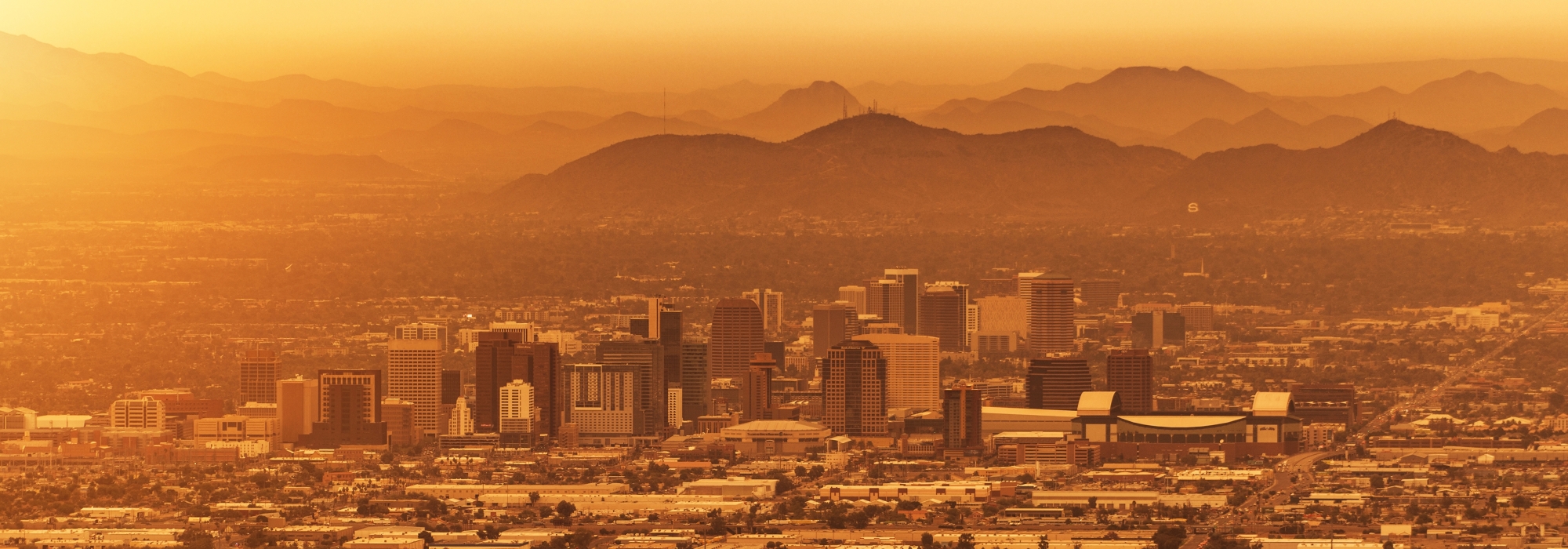
Our Resilience Approach: FUSE
We strive to share knowledge and discover solutions in four distinct yet interrelated resilience areas, abbreviated as FUSE:

Food, energy and water
transitions
Urban heat and
healthy communities

Shelter and the built
environment

Economic security
and work
1. Food, energy and water transitions
Food and water systems in a resilient community are characterized by equitable distribution and reliable access to safe, healthy foods and adequate quantities of clean water for all residents everywhere. Assemblages engage a diverse set of productive actors such as local growers, urban farms and a robust sustainable heat-adapted agricultural industry. Supply chains are robust and resistant to disruption or scarcity.
The energy landscape of a resilient community consists of a diverse, integrated array of resources and infrastructure for obtaining sustainable and renewable fuel for cooling, heating, and mobilizing in our homes, businesses, and public spaces, as well as to fuel transportation systems that are available and accessible to all rural and urban residents across the county and beyond. Interruptions in the provision of power, whether due to economic or environmental drivers, are rare and short-lived.
2. Urban heat and healthy communities
Healthy, resilient communities create the necessary social and physical environments that promote good health for all, capable of thriving in the face of potential chronic stressors, such as heat exposure, and of withstanding shocks such as rapid-moving epidemics. Access to care and prevention facilities is equitable, and services are responsive to locally relevant threats to residents of all ages and backgrounds. Belonging to an inclusive place, enjoying a diverse community, exercising human rights, and developing social cohesion among neighbors and across organizations, are experiences that set apart the capacity of communities that are building resilience.
3. Shelter and the built environment
Shelter in resilient communities is ubiquitous, affordable, safe, and secure. Housing options are diverse and available in adequate quantities and at proper quality to every resident, providing relief from heat, floods, or other environmental threats. Periods of lack of shelter whether experienced by students, families, veterans, elderly or others, are infrequent and nonrecurring. A robust continuum of services is available to bridge needs for those suffering eviction or foreclosure, and is provided in equitable measure to all. Homes are constructed to be resilient to heat, and are free from domestic violence and crime.
4. Economic security and work
Resilient communities are economically secure, with organizations from private, public, and education sectors alike working in concert to meet present needs and prepare for future dynamics. Residents are able to generate consistent income or work for fair wages, salaries, or compensation in an integrated workforce and education system that provides equitable access to opportunities for generating resources for individuals and families of all backgrounds. A diversity of jobs and businesses lead to optimal productive capacity, able to transform challenges such as heat exposure to potential innovation. People participating in resilient economies are able to withstand downturns, confront changes from growth, and successfully face a dynamic future of work.
We emphasize across these themes that here in Maricopa County, heat is a major threat multiplier and underlies our understanding of all FUSE themes.
Furthermore, we recognize that pervasive to our understanding of these themes is the notion that community resilience relies upon attention to equity, including that shocks and stresses often disproportionately affect particular vulnerable and disadvantaged populations, requiring a proactive approach, and that solutions should strive for the equitable distribution of resources to withstand shock and stress according to exposure and risk.
Finally, we acknowledge that place-based understandings are critical and that these themes will play out differently depending on the place in which we are considering how to build resilience.
